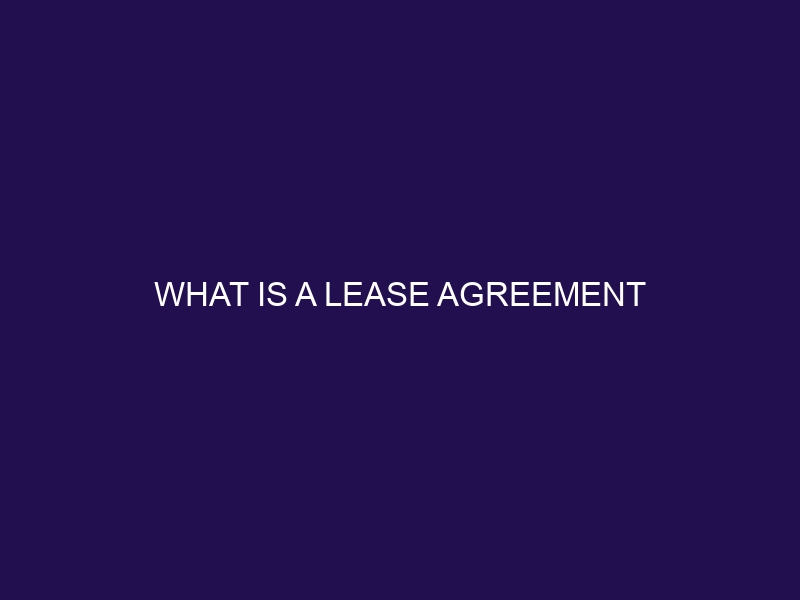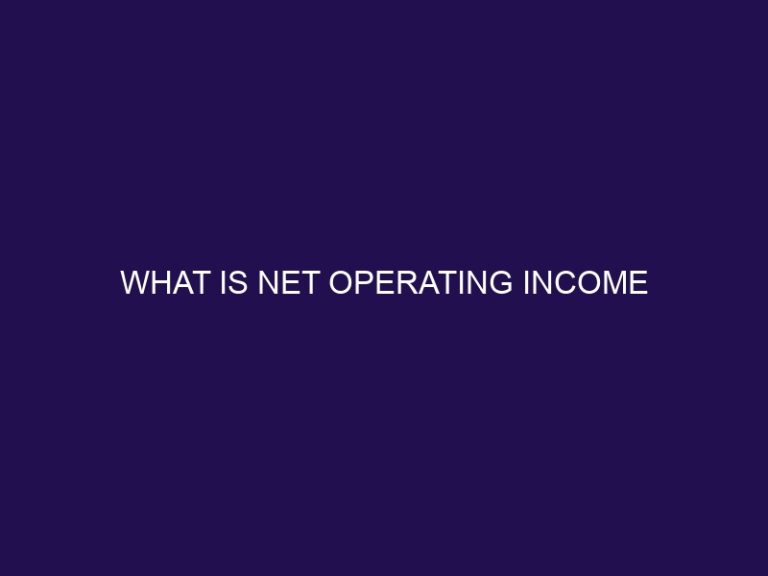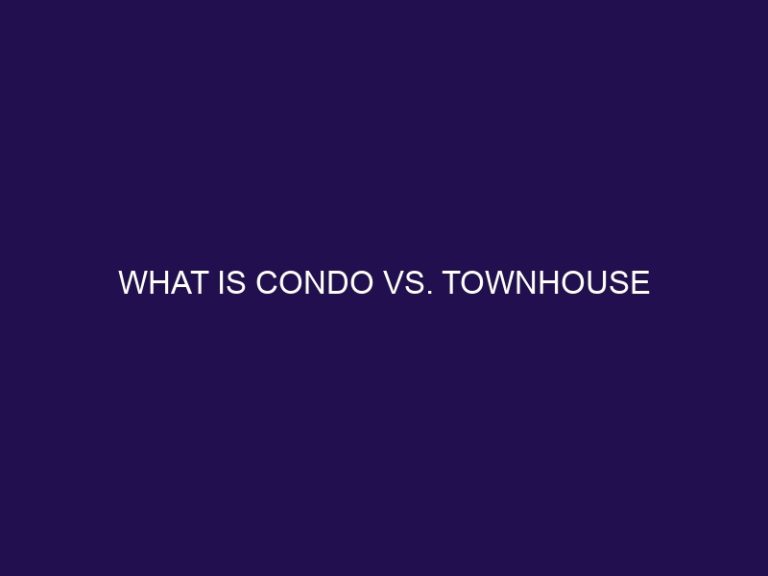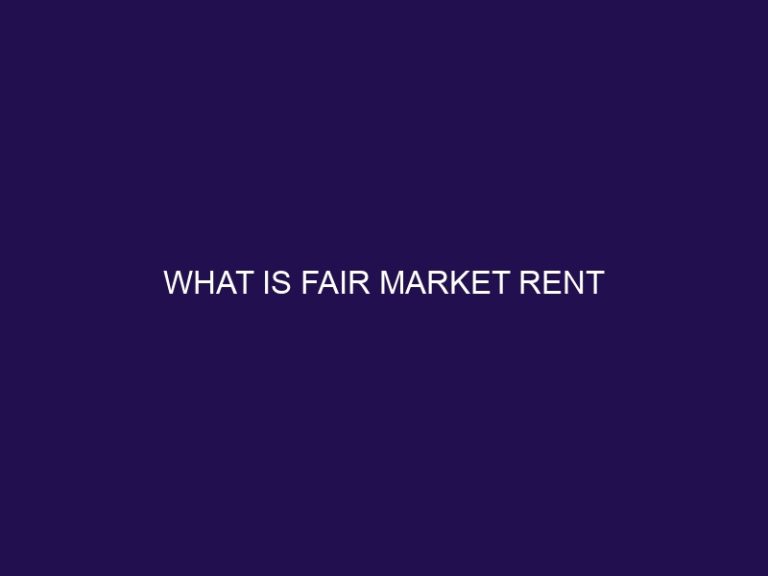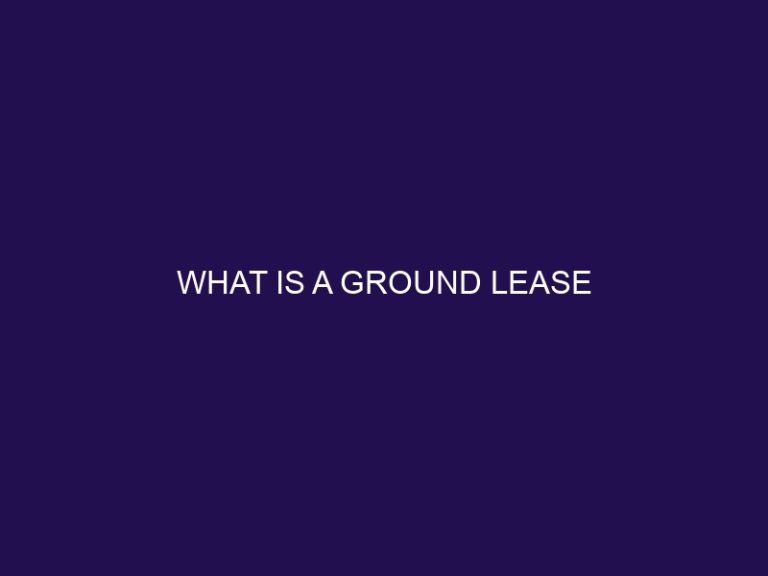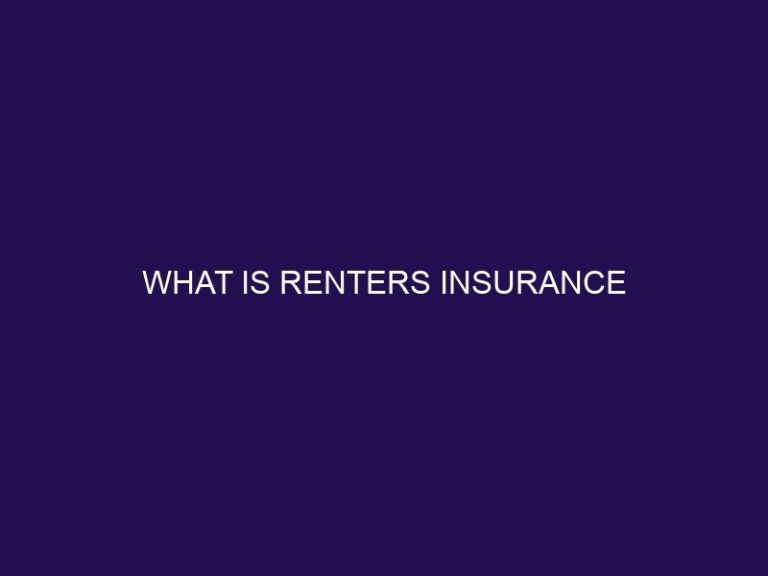What is a Lease Agreement
A lease agreement is a legally binding contract between a landlord and a tenant that outlines the terms and conditions of renting a property. It serves as a crucial document that establishes the rights and responsibilities of both parties involved. Understanding and having a well-drafted lease agreement is essential for a smooth and transparent landlord-tenant relationship.
In this article, we will delve into the concept of a lease agreement, exploring its definition and different types. We will also discuss the key elements that should be included in a lease agreement, such as the parties involved, property information, lease term, rent payment terms, security deposit, maintenance and repairs, rights and responsibilities, and termination and eviction clauses.
Furthermore, we will examine the importance of lease agreements, highlighting how they provide legal protection for both landlords and tenants, ensure clarity in expectations, and help establish ground rules for residing in the rented property.
Finally, we will provide insights into creating a lease agreement, offering guidance on what to include and how to draft an effective and enforceable contract. By the end of this article, you will have a comprehensive understanding of lease agreements and their significance in the landlord-tenant relationship.
What is a Lease Agreement?
A lease agreement is more than just a piece of paper – it holds the key to a housing or commercial arrangement. In this section, we’ll dive into the ins and outs of lease agreements, unpacking their definition and the various types that exist. From understanding the essential elements to exploring the different legalities involved, we’ll give you a clear picture of what a lease agreement truly entails. So, get ready to empower yourself with the knowledge you need to navigate these important contracts.
1. Definition of a Lease Agreement
A lease agreement is a legally binding contract between a landlord and tenant that outlines the terms and conditions of renting a property. It establishes the rights and responsibilities of both parties and provides clarity to avoid disputes. Key elements of a lease agreement include property information, lease term and renewal, rent and payment terms, security deposit, maintenance and repairs, and termination and eviction. Creating a lease agreement is crucial for legal protection and establishing ground rules. According to the definition of a lease agreement, it is a contract that defines the rights and obligations of a landlord and tenant when it comes to renting a property. In history, the first recorded lease agreement dates back to ancient Mesopotamia around 1750 B.C., where landowners and tenants agreed upon terms for agricultural tenancy.
2. Types of Lease Agreements
When it comes to lease agreements, there are various types to consider based on specific needs and circumstances. Let’s explore the different types of lease agreements:
- Residential Lease Agreement: This type is used for renting a home or apartment.
- Commercial Lease Agreement: It is designed for leasing commercial properties such as offices, retail spaces, or warehouses.
- Sublease Agreement: This agreement allows a tenant to lease their rented property to another individual.
- Month-to-Month Lease Agreement: It offers flexibility with a shorter lease term, usually renewable on a monthly basis.
- Fixed-Term Lease Agreement: This type has a specific duration and is not easily terminated before the agreed-upon end date.
By understanding the different types of lease agreements, individuals can choose the one that best suits their specific leasing requirements.
Key Elements of a Lease Agreement
When diving into the realm of lease agreements, it’s crucial to understand the key elements that make up this legal contract. We’ll explore various aspects that play a significant role in shaping the agreement, from the parties involved to the property information, lease term and renewal, rent and payment terms, security deposit, maintenance and repairs, rights and responsibilities, and finally, termination and eviction. Unraveling these elements will shed light on the intricate details that form the backbone of a lease agreement, ensuring both parties are well-informed and protected throughout the duration of their arrangement.
1. Parties Involved
When it comes to a successful lease agreement, it is crucial to carefully select reliable lessees and lessors. To ensure that you make the right decision, consider the following factors that involve the parties:
1. Financial stability: You should choose tenants or landlords who have a stable income or business. This will guarantee timely payments and provide financial security.
2. Background check: Conducting a thorough background check is necessary to verify credibility and avoid any potential issues.
3. Communication skills: Good communication is vital for a smooth landlord-tenant relationship. Make sure to select parties who are responsive and cooperative in their communication.
4. Legal representation: It is advisable for both parties to seek legal advice. This will ensure that their rights and obligations are protected.
Remember, incorporating these factors when selecting the parties involved in a lease agreement will contribute to its overall success.
2. Property Information
Property information is an essential component of a lease agreement. It constitutes vital details regarding the rental property that are crucial for both the landlord and tenant to know. This pertinent information typically encompasses the address of the property, its size or square footage, the number of rooms or units available, and any amenities or features that are provided. The lease agreement may also outline specific restrictions or rules pertaining to the property’s usage, including matters such as parking arrangements, noise levels, or policies regarding pets. The inclusion of this information serves to ensure that both parties possess a comprehensive understanding of the property and its terms prior to entering into the lease agreement.
3. Lease Term and Renewal
The lease term and renewal of a lease agreement are crucial aspects that need to be considered. The lease term refers to the duration for which the agreement is valid, clearly stating the start and end dates. The options for renewal provide tenants and landlords with the opportunity to extend the lease beyond the initial term. To ensure a smooth process, it is essential to carefully review the lease agreement, paying close attention to the terms and conditions regarding renewal, such as any adjustments in rent or required notice periods. Through open and effective communication, as well as proper documentation, both parties can avoid potential disputes and maintain a harmonious landlord-tenant relationship. Here’s a fun fact: Did you know that lease terms typically range from six months to one year?
4. Rent and Payment Terms
When it comes to rent and payment terms in a lease agreement, it’s crucial to establish clear guidelines for both the landlord and the tenant. This helps to avoid any confusion or disputes in the future. Here are some key steps to consider when setting up rent and payment terms:
- Agree on the monthly rent amount.
- Determine the payment due date and any grace periods.
- Decide on the preferred payment method, such as check, bank transfer, or online payment platforms.
- Specify if there are any penalties for late rent payments and the amount of those penalties.
- Outline the process for rent increases, including the notice period and the maximum percentage of increase allowed.
- Include details about any additional fees or charges, such as utilities or parking.
- Outline the consequences for bounced or returned rent checks.
- Discuss the procedure for handling security deposits and when they will be returned.
By following these steps and clearly outlining rent and payment terms, both parties can have a smooth and mutually beneficial leasing experience.
5. Security Deposit
In lease agreements, a security deposit is a crucial element that provides financial protection to the landlord. Here are some key points to consider:
- Amount: The security deposit amount is typically equal to one or two months’ rent.
- Purpose: The security deposit serves as a safeguard against any damages or unpaid rent during the lease term.
- Return: The security deposit is refundable upon the tenant’s compliance with the lease terms and condition.
- Use: Landlords can use the security deposit to cover repair costs or unpaid rent if the tenant violates the agreement.
- Inspection: A move-in and move-out inspection can help document the condition of the property and avoid disputes.
Ultimately, the security deposit offers both parties security and peace of mind throughout the leasing process.
6. Maintenance and Repairs
When it comes to maintenance and repairs in a lease agreement, both the landlord and tenant have responsibilities to ensure the property is well-maintained. Here are some steps to keep in mind:
- Regular Maintenance: Both the landlord and tenant have a duty to perform regular maintenance tasks, such as changing light bulbs or air filters.
- Reporting Repairs: If any repairs are needed, the tenant should promptly inform the landlord in writing to ensure timely resolution.
- Landlord’s Responsibilities: It is the landlord’s obligation to handle major repairs, including fixing plumbing or electrical issues.
- Timely Repairs: Both parties should prioritize addressing repairs promptly to prevent further damage and inconvenience.
- Reimbursement: In case the tenant causes damage, they may be held responsible for covering the cost of necessary repairs.
By following these steps, maintenance and repair issues can be handled effectively, ensuring a smooth and comfortable living experience for both the tenant and landlord.
7. Rights and Responsibilities of the Parties
- It is essential for both parties to understand their rights and responsibilities to ensure a smooth and transparent leasing process.
- Payment obligations: The tenant is responsible for paying rent on time, while the landlord must provide a safe and habitable property.
- Property maintenance: The landlord is generally responsible for major repairs, while the tenant is responsible for minor maintenance and upkeep.
- Use of the property: The tenant has the right to use the property for the agreed-upon purposes, while the landlord has the right to ensure the property is not used for illegal activities.
- Renewal and termination: Both parties must adhere to the stipulated lease term, with the option for renewal. Early termination or eviction must comply with local laws and be done with proper notice.
True story: A tenant and landlord had a clear understanding of their rights and responsibilities. The tenant reported maintenance issues promptly, and the landlord responded promptly. This open communication fostered a good relationship, resulting in a long-term lease agreement.
8. Termination and Eviction
Termination and eviction are vital components of lease agreements that specifically highlight the conditions under which a lease can be concluded. This table provides an overview of the essential factors pertaining to termination and eviction within a lease agreement:
| Factors | Description |
|---|---|
| Notice period | Determines the amount of advance notice required for termination or eviction. |
| Breach of lease terms | Specifies the actions that qualify as a breach of the lease agreement. |
| Remedies for breach | Outlines the actions available to the landlord in the event of a breach. |
| Damage and dispute resolution | Addresses the procedures for handling damage disputes and methods of resolution. |
| Eviction process | Explains the steps involved in the eviction process, including legal proceedings if necessary. |
Having a comprehensive understanding of these factors is crucial for both parties involved and aids in preventing disputes during the termination or eviction process.
Understanding the Importance of Lease Agreements
Lease agreements may seem tedious, but they play a crucial role in ensuring a smooth landlord-tenant relationship. In this section, we’ll delve into why lease agreements are so important. From providing legal protection for both parties to establishing clear guidelines and minimizing disputes, we’ll explore the various benefits these agreements offer. So, let’s break down the significance of lease agreements and understand how they lay the foundation for a harmonious and well-defined renting experience.
1. Legal Protection for Both Parties
When it comes to lease agreements, legal protection for both landlords and tenants is crucial. This protection ensures that the rights and responsibilities of each party are clearly outlined, minimizing the chances of potential disputes. Several key elements contribute to this legal protection, including:
| – Clear identification of the parties involved |
| – Detailed property information |
| – Specified lease term and possible renewal options |
| – Agreed-upon rent and payment terms |
| – Provision for a security deposit |
| – Clarity on maintenance and repair responsibilities |
| – Outlined rights and responsibilities of both parties |
| – Procedures for termination and eviction |
By having a well-crafted lease agreement, both landlords and tenants can confidently enter into the rental arrangement, knowing that their rights and obligations are legally protected.
2. Clarity and Avoidance of Disputes
A lease agreement promotes clarity and plays a significant role in the avoidance of disputes between landlords and tenants.
- Clarity: A well-drafted lease agreement precisely delineates the rights and responsibilities of both parties, encompassing the rent amount, payment terms, maintenance obligations, and regulations pertaining to any common areas.
- Avoidance of Disputes: By explicitly defining expectations and duties, a lease agreement diminishes the likelihood of misunderstandings and conflicts throughout the tenancy period.
- Dispute Resolution: In the event of a disagreement, a lease agreement often includes provisions for resolving conflicts, such as mediation or arbitration, facilitating fair resolutions without resorting to costly litigation.
3. Establishing Ground Rules
When creating a lease agreement, it is crucial to establish clear ground rules for both the landlord and the tenant to ensure a seamless rental experience. Here are the steps to follow:
-
Specify the rules regarding pets, smoking, and noise levels to maintain a peaceful living environment.
-
Outline maintenance responsibilities, such as who is responsible for repairs and upkeep of the property.
-
Include provisions for parking, garbage disposal, and any shared spaces to avoid conflicts.
-
Clearly define the payment terms, including rent amount, due dates, and acceptable payment methods.
Fact: Establishing Ground Rules in a lease agreement can help prevent misunderstandings and protect the rights of both parties involved.
How to Create a Lease Agreement?
- How to Create a Lease Agreement? Creating a lease agreement involves several important steps to ensure a clear and legally binding document.
- Identify Parties: Clearly state the names and contact information of both the landlord and the tenant.
- Define Property: Describe the property being leased, including its address and any specific details or restrictions.
- Specify Terms: Determine the duration of the lease, payment details, and any additional terms or conditions.
- Include Legal Language: Incorporate necessary legal clauses, such as those related to maintenance, repairs, and termination.
- Signature and Date: Have both parties sign the lease agreement and include the date of execution.
It is essential to consult with a legal professional or use a reputable online template to ensure compliance with local laws and regulations.
Fact: Properly drafted lease agreements can help prevent disputes and protect the rights of both landlords and tenants.
Frequently Asked Questions
What is a lease agreement?
A lease agreement is a contract between a landlord and tenant that specifies the monthly rent and duration of the lease. It outlines the obligations and responsibilities of both parties and can be used as a legal document in court.
What are the differences between a lease agreement and a rental agreement?
A lease agreement is for a fixed period of time, typically 6 or 12 months, providing stability and long-term occupancy. A rental agreement, on the other hand, is usually month-to-month and offers more flexibility as it can be changed at the end of each month with proper notice.
What are the key elements of a lease agreement?
A lease agreement typically includes details such as the rent amount, duration of the lease, responsibilities for property upkeep, pet policies, and any rules or regulations. It may also have provisions for termination clauses, notice procedures, and requirements for disclosing certain information by landlords.
Are verbal lease agreements legally binding?
Verbal lease agreements are enforceable as oral contracts in some states for residential leases but not for commercial leases. However, it is generally recommended to have written lease agreements to avoid legal complications and clearly outline the terms and conditions.
What are the pros and cons of a lease agreement?
The pros of a lease agreement include stability and long-term occupancy, providing a predictable rental income stream and reducing turnover costs for landlords. However, leases may limit flexibility for both parties. Rental agreements, on the other hand, offer more flexibility as they can be changed on a monthly basis.
Can a lease agreement be altered after signing?
A lease agreement can be altered before signing if there are any concerns or provisions that need to be changed. However, once signed, the lease agreement governs the actions of both parties, and any changes would require mutual agreement and proper documentation.

